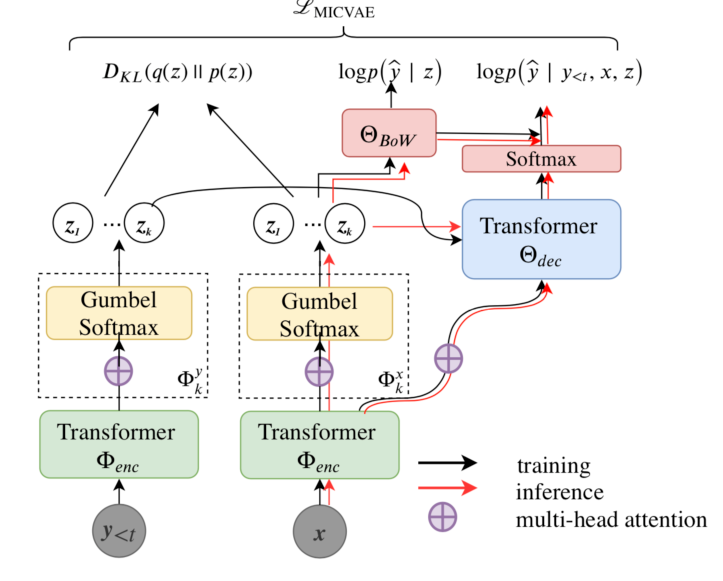A Batch Normalized Inference Network Keeps the KL Vanishing Away
Qile Zhu, Wei Bi, Xiaojiang Liu, Xiyao Ma, Xiaolin Li, Dapeng Wu
Machine Learning for NLP Long Paper
Session 4B: Jul 6
(18:00-19:00 GMT)

Session 5B: Jul 6
(21:00-22:00 GMT)

Abstract:
Variational Autoencoder (VAE) is widely used as a generative model to approximate a model's posterior on latent variables by combining the amortized variational inference and deep neural networks. However, when paired with strong autoregressive decoders, VAE often converges to a degenerated local optimum known as ``posterior collapse''. Previous approaches consider the Kullback–Leibler divergence (KL) individual for each datapoint. We propose to let the KL follow a distribution across the whole dataset, and analyze that it is sufficient to prevent posterior collapse by keeping the expectation of the KL's distribution positive. Then we propose Batch Normalized-VAE (BN-VAE), a simple but effective approach to set a lower bound of the expectation by regularizing the distribution of the approximate posterior's parameters. Without introducing any new model component or modifying the objective, our approach can avoid the posterior collapse effectively and efficiently. We further show that the proposed BN-VAE can be extended to conditional VAE (CVAE). Empirically, our approach surpasses strong autoregressive baselines on language modeling, text classification and dialogue generation, and rivals more complex approaches while keeping almost the same training time as VAE.
You can open the
pre-recorded video
in a separate window.
NOTE: The SlidesLive video may display a random order of the authors.
The correct author list is shown at the top of this webpage.
Similar Papers
On the Encoder-Decoder Incompatibility in Variational Text Modeling and Beyond
Chen Wu, Prince Zizhuang Wang, William Yang Wang,

Addressing Posterior Collapse with Mutual Information for Improved Variational Neural Machine Translation
Arya D. McCarthy, Xian Li, Jiatao Gu, Ning Dong,

Variational Neural Machine Translation with Normalizing Flows
Hendra Setiawan, Matthias Sperber, Udhyakumar Nallasamy, Matthias Paulik,

Generative Semantic Hashing Enhanced via Boltzmann Machines
Lin Zheng, Qinliang Su, Dinghan Shen, Changyou Chen,
